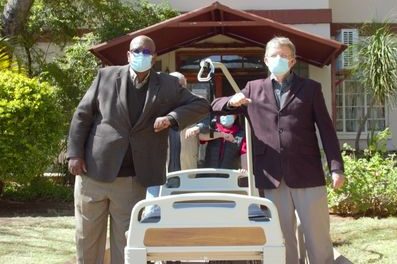
TB poses much bigger health challenge than Covid

By Clifton Movirongo.
The Ministry of Health and Social Services and the World Health Organization (WHO) on Thursday 27 April celebrated World TB Day in Tsumkwe in the Otjozondjupa region under the theme, ‘Yes! We can end TB!’, with Namibia said to be one of the 30 countries worldwide with high tuberculosis (TB) incidents.
The country ranks ninth among the 30 high-burden countries for TB. Globally, the number of people who fall ill with TB is more in developing countries. In 2022, Namibia noted 8604 patients with TB, reflecting an increase of 30% from 6599 cases in 2021, according to the latest ministry statistics. In addition, the Global TB Report indicated that Namibia may have been missing up to 42% of its domestic TB cases, based on 2021 estimates.
This comes as Namibia could not observe its commemoration of World TB Day 2023 on the intended date, 24 March, and therefore, was re-scheduled to take place on 27 April.
Delivering his keynote address at the commemoration ceremony, the Minister of Health and Social Services, Dr Kalumbi Shangula, noted that progress was achieved in the fight against TB in Namibia and other countries.
“However, TB remains one of the deadliest infectious diseases, claiming over 1.4 million lives each year. That is a devastating toll, considering TB is preventable and curable. Thus, as in the past, this commemoration must remind us that TB is a major public health challenge facing the world today and our country,” said Shangula.
He also said that his ministry aims to get communities involved to raise awareness about TB, emphasising that without their involvement, efforts to combat TB or any other disease will not be successful.
He said: “The communities must be at the center of this campaign. They must be the focus of efforts and initiatives such as this one. As far as possible, the communities must drive these initiatives. That is why we talk about community ownership, community buy-in and community involvement in health promotion activities.”
Furthermore, Shangula said the reported increase in cases is not necessarily a negative development as it may appear at first glance, saying that the increase indicates that their efforts to close the treatment gap are having the desired effect.
“Although progress has been made in recent years, much work still needs to be done to eliminate TB in Namibia and improve the health outcomes of those affected by the disease.”
The minister said they increased the number of community health workers through support from the Global Fund and DAPP. Furthermore, the Centre for Disease Control and Prevention helped the ministry to put up a small laboratory, dispensary, consulting offices and waiting areas.
Cheryl Amoroso, PEPFAR Coordinator, noted that Namibia has the ninth highest TB rate worldwide, with12,000 people contracting TB each year, translating into one person every 44 minutes. She also disclosed that there were almost 3000 deaths last year.
According to her, globally, TB rates are higher among specific groups, like mine workers, incarcerated people, refugees, and immigrants.
“Other groups, such as the San are at particularly high risk of TB which is also closely associated with medical conditions – HIV, alcohol abuse, tobacco use, and diabetes. Finally, TB is intertwined with social factors, including overall poverty and undernourishment. To address TB, we need to think more broadly about health and social services that can serve these groups. We need to think about treating not just the disease, or even individuals, but taking care of communities,” she remarked.












































